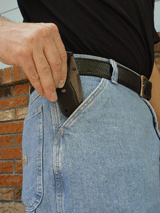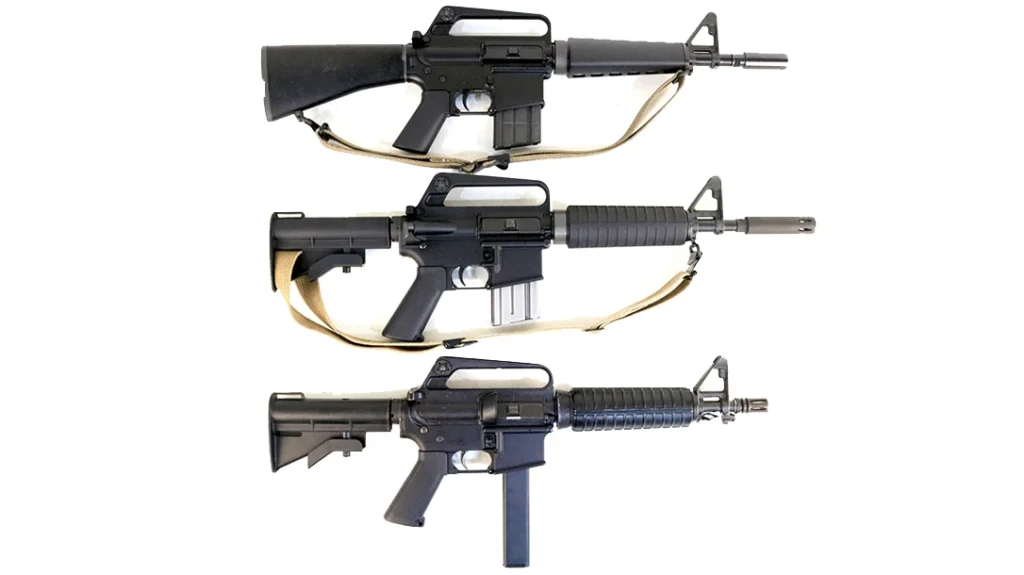When I teach seminars in knife tactics, one of the most common questions I get regarding folding knives is, “Which is better—tip-up or tip-down carry?” Like most great tactical debates, the real answer to this question depends upon the end-user’s priorities and personal preferences. However, since there are strong arguments for both options, the topic deserves a closer look.
I first gave this issue serious thought in the late 1980’s. At that time, pocket clips were just starting to become popular and I began experimenting with all the possible carry options they afforded. I also started focusing heavily on integrating drawing and opening techniques and developing empty-hand tactics that paved the way for rapid knife deployments.
During that process, I found that the choice of carry style basically boils down to four factors: your preferred one-handed opening technique, the size of your closed knife, the grip offered by the closed knife in your pocket and, most importantly, the amount of practice you’re willing to invest in your deployment skills. The reasons that these factors are critical are as follows:
Advertisement — Continue Reading Below
• Opening technique: Determines how you need to grasp the knife once it clears the pocket.
• Size of the closed knife: Determines how well you can grip the knife when it is still in the pocket and how close you can come to the pre-opening grip you need.
• Grip offered by the closed knife: Has a huge influence on how well you can establish a good pre-opening grip.
• Amount of practice: The more time you’re willing to invest in developing skill, the higher you can aim on the skill spectrum.
Grand Openings
When it comes to opening technique, one-handed openings such as the traditional thumb opening (be it with stud, disk, or hole) and old-fashioned two-handed openings (still a viable and very reliable tactical option) typically work best from the tip-up carry position. The reason for this is that in the tip-up position, the knife is oriented so it can be grasped with almost a complete grip while still in the pocket by simply digging deep with the thumb before withdrawing the knife.
Like drawing a handgun—where the grip on the gun should be properly established before the gun clears the holster—drawing the knife from a tip-up carry puts it in your hand in a way that is very close to the grip you would need to immediately open the blade. Less manipulation means better reliability under stress.
Advertisement — Continue Reading Below
Unfortunately, very large knives and knives with clips that position the knife so that it’s difficult to grip well while still in the pocket can easily foil the advantages of tip-up carry. Such knives often work better when carried tip down, so, upon drawing, your hand is positioned close to the pivot-pin end of the handle where it can initiate the opening.
If your preferred opening technique leans toward the blade-grip/handle-drop (aka “Spyder Drop,”) an index-finger “flipper” opening, or if your knife is a true button-fired automatic, tip-down carry is your best bet. The disadvantage of this carry style—and most of the associated openings—is that your grip on the knife is typically less secure or at least involves a smaller surface area, making it less reliable under stress.
The exception to this rule is the idea of carrying tip-down, but using the preferred opening methods listed for tip-up carry above. This means that as the knife clears the pocket, it has to be repositioned in the hand to achieve a proper pre-opening grip. Thus we have the final factor—practice.
Advertisement — Continue Reading Below
The McCann Method
The best method I’ve seen for this approach is the draw used by close-combat authority Kelly McCann. Kelly carries tip-down. When drawing, he grips the pivot pin end of the handle with a pinch grip of his thumb and index finger and raises it straight up. As soon as the butt of the handle reaches the top of his pocket, he rotates his hand downward, pivoting the butt of the knife against his hip bone while it rotates into a good pre-opening grip for a thumb opening or similar technique. While slightly more skill intensive than a grip-draw-and-open approach, it is still very reliable under stress.
A final word: Some folks consider carry position to be primarily a matter of safety, not a speed or reliability-of-deployment-issue. They say tip-up is dangerous because the blade could open accidentally in the pocket. I disagree. Carry all the way to the back of the pocket along the trouser seam (for consistent placement and to ensure the knife stays closed), buy better quality knives, and—most importantly—get off the couch and practice! You’ll do just fine.
























